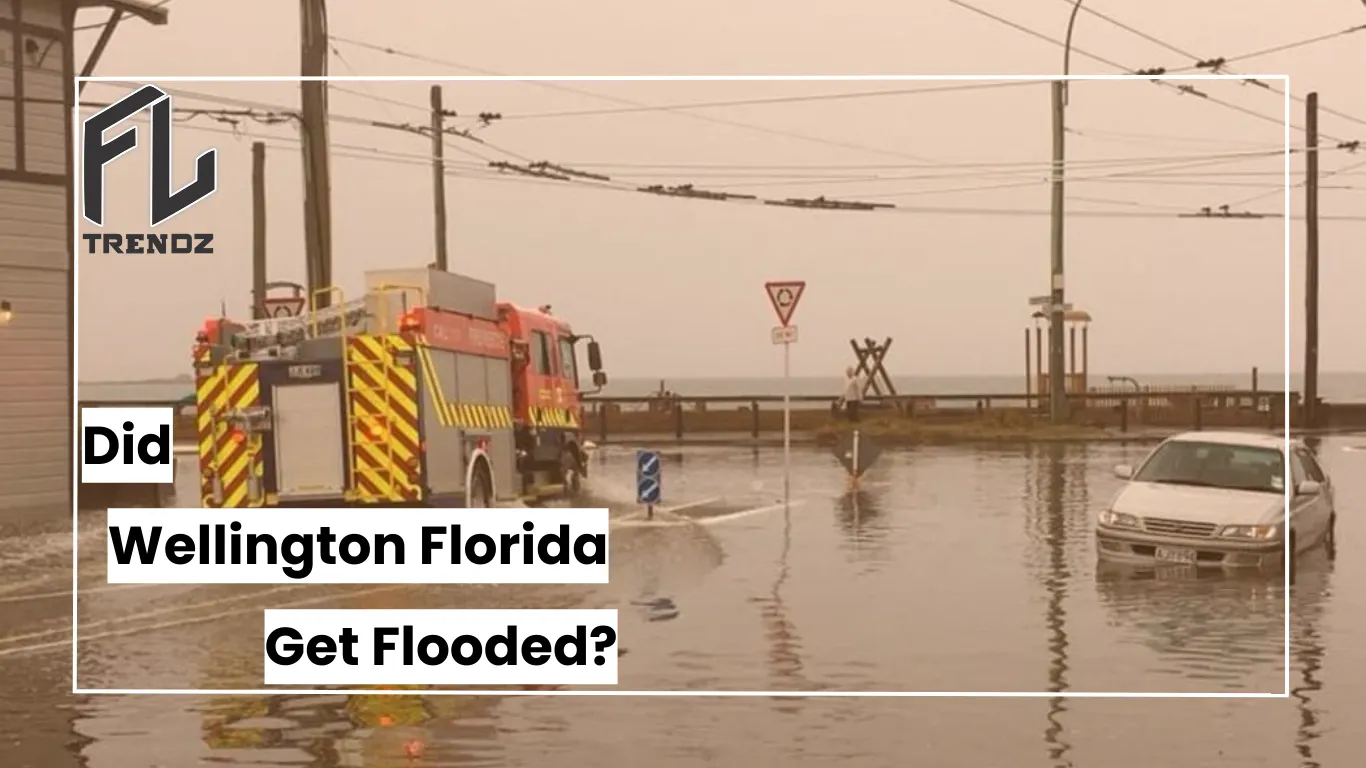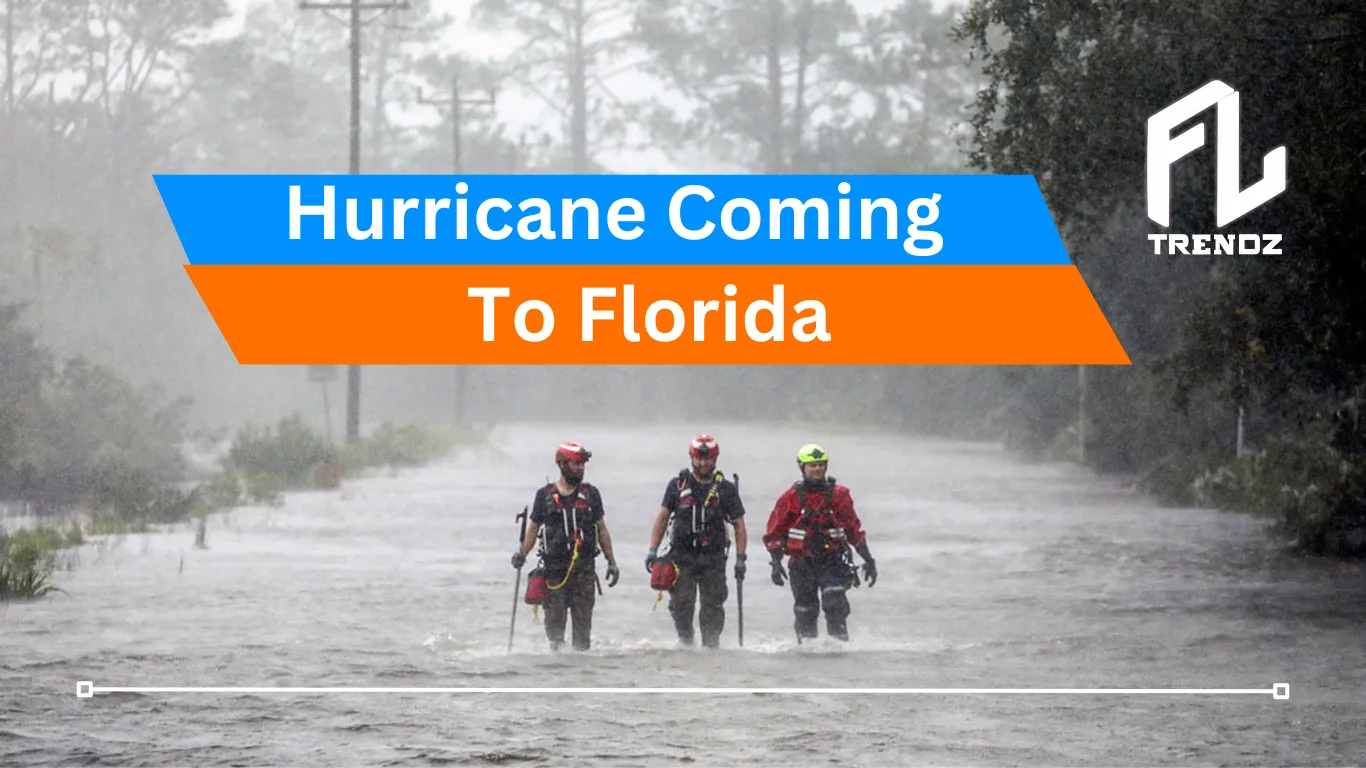Hurricane Warning: Idalia Set for Powerful Strengthening and Florida Landfall during 2023 Season
Tropical Storm Idalia will get much more potent and become a big hurricane before it reaches the western coast of Florida. It could cause a lot of danger to people and their things in Florida around the middle of the week.

People in Florida are preparing for a big hurricane on Wednesday. There’s a tropical storm called Idalia that’s getting stronger near Cuba. Experts at FLTrendz who study hurricanes say this storm will quickly become a powerful hurricane on Tuesday over the Gulf of Mexico, and then it will hit Florida.
A huge danger is coming for part of Florida, especially the Big Bend area. This place is between the two coasts, the Panhandle and the peninsula, near the Gulf. The danger is from a strong storm called Idalia, which will become a hurricane by Wednesday morning. This area could have high water, hazards, strong winds that cause damage, and heavy rain.
Read About: Best places to live in Florida Panhandle
Right now, there’s a special alert called a “hurricane warning” for the western side of Florida. This warning covers a big area, starting from the eastern part of the Panhandle and going all the way down to Tampa Bay and regions further south. Some places might also have “tropical storm watches and warnings,” which is like a heads-up for a weaker storm, along Florida’s Gulf Coast, including the Florida Keys.
After the storm hits Florida, it’s expected to affect an even bigger area. This area includes states like Georgia, the Carolinas, and Virginia in the southeastern part of the U.S. This will happen later in the same week.
On Sunday morning, a weak storm called Tropical Depression 10 became more vigorous and Tropical Storm Idalia. By Monday morning, Idalia was hanging out just west of the farthest point of Cuba. It had winds of 65 mph (105 km/h), which is like a strong breeze. It’s going to move slowly and unpredictably until Monday afternoon. After that, it will start moving north and get faster, heading towards the eastern part of the Gulf of Mexico. It’s like going through a tight space between the Yucatán Peninsula and Cuba called the Yucatán Channel.
The storm is expected to continue to strengthen in the southern and eastern Gulf of Mexico in the coming days as it becomes more organized amid very high ocean water temperatures and low wind shear.
Brandon Buckingham
When a storm enters the Gulf, it usually can’t leave without hitting land. The forecast shows the storm Idalia will likely hit Florida as a hurricane on Wednesday morning. Before it reaches Florida, it might get stronger fast.
“Meteorologists are concerned that this system could strengthen rapidly until landfall as it moves across an area of very high ocean temperatures in the Gulf,” said Buckingham. “This will pose an extra risk to Florida since preparations for an intense hurricane may need to be completed very quickly.”
When a tropical storm gets much stronger quickly, it’s called “rapid intensification.” It means its winds get at least 35 mph (55 km/h) faster in just one day. The National Hurricane Center uses this definition. This fast strengthening can be risky because it can happen right before the storm hits land. That means people need to prepare even more in the last few hours before the storm comes.
Before reaching the United States, the storm Idalia will affect the Yucatan Peninsula and western Cuba, and it will happen until Monday. People there have been given warnings about the storm. They can expect strong winds, like gusts up to 75 mph (120 km/h), and a lot of rain, around 4 to 8 inches (100 to 200 mm). It will happen in the first part of the week. Additionally, the ocean will be rough with big waves.
Hurricane Warning: Idalia Storm will Hit Florida
Florida is the next place that will be affected by the storm. The scale for hurricanes says that the impact in the Caribbean is low (less than 1), but it’s a 3 for Florida. It means there’s a considerable risk of flooding, strong winds, and a lot of damage from both the wind and the high water coming from the sea, which is called storm surge.
“Damaging winds of 40 to 60 mph can occur across Florida and parts of the Southeast,” said Buckingham. “Closest to where the tropical system makes landfall, however, wind gusts of up to 120 to 140 mph can occur.”
Because the storm might get a lot stronger quickly, the most vital part of it could have winds as high as 140 mph when it’s near the Panhandle and Big Bend of Florida. The experts think it could be a potent hurricane, like Category 3 when it hits. That means the wind speeds could be between 111 and 129 mph, according to the Saffir-Simpson Hurricane Wind Scale.
Flooding is a big worry, too. There could be 4 to 8 inches of rain from northern Florida to the Southeast. There may be as much as 18 inches of rain in some places quickly. It could cause severe flooding, which is dangerous for lives. Most rainfall is expected to fall in just 12 hours or less.
Also Read: Did Wellington Florida Get Flooded
Isolated tornadoes can also occur east of the circulation’s center as it moves across Florida.
Senior Meteorologist Dan Pydynowski
Before the storm Idalia comes, people living and visiting Florida’s Gulf Coast should start getting ready. It’s essential to have a plan in case they need to leave their area. If local leaders say it’s time to leave, they should be ready to go. Some places that could be more at risk include Panama City, Mexico Beach, Apalachicola, Steinhatchee, and Cedar Key. These areas are near the Gulf Coast and might be in danger.
The storm Idalia is about two days away from hitting land. But it might move in a slightly different direction. “Cone of uncertainty” shows the more extensive area where the storm could go. This cone stretches from around Tampa Bay to the far western part of the Florida Panhandle. And it means that even people who aren’t exactly in the predicted path of the storm should still watch how it’s moving, whether they live there or are just visiting.
The National Hurricane Center has already given out “hurricane watches” for Florida because of the storm Idalia. These watches cover areas except for places like Tallahassee, Jacksonville, and Punta Gorda. It means they’re closely monitoring the storm to see if it gets worse and becomes a hurricane.
Even though the wind might weaken after the storm reaches land, the dangers won’t only be on the Gulf Coast and in Florida. A big part of the Southeast will also be in trouble. There could be flooding, strong winds, and problems along the coasts. It could happen because the storm will meet a stationary line called a “frontal boundary” over the area. This boundary could make things worse.
There will be a lot of rain, around 4 to 8 inches, and strong wind gusts of at least 40 mph. It will happen in places like eastern Georgia and the Carolinas until the end of the week. It might cause problems for people with vacation plans, especially before Labor Day weekend.
You must be careful if you want to go to the beaches on Florida’s Gulf or southeastern Atlantic coast. The ocean waves might become rough, and there could be strong currents called rip currents. These issues might start even before the storm arrives. The waves could be giant not just because of Idalia but also because of another storm called Hurricane Franklin. This storm is far away in the Atlantic as of Monday.
The paths of Idalia and Franklin might meet up. The experts think the storm might go back over the ocean next week and, during the Labor Day weekend, could make the two storms come close.
By late week, the storm can turn toward the east and re-emerge over the Atlantic Ocean.
Buckingham
Right now, it’s not likely that the storm will get stronger again. Instead, it will move from the East Coast and head towards Bermuda.
Idalia is the 10th storm of this year’s Atlantic hurricane season. A hurricane expert from Colorado State University, Philip Klotzbach, said this is only the seventh time since they started tracking that ten storms have formed by August 27th in a hurricane season.






